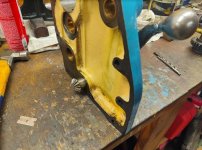texasgeartrain
Titanium
- Joined
- Feb 23, 2016
- Location
- Houston, TX
I got the leadscrew end bracket cleaned up, and the bearings for feed rod and clutch rod shoved out:

Painted, and I'll be drill oil passages and adding gits oilers to 3 of the 4 bearing holes. Exception is the leadscrew reverse. That slides in and out, besides rotating, so easy enough to lube.

QCGB off:

End cover removed. Replacing seal will be easier with shaft out of the way too. After seeing bushing and shaft for feed rod, I'll be adding a gits oiler for that too.
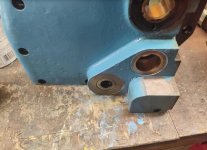
The problem bushing, is wore, but so is the shaft. I'll be cutting that down, and/or replacing with Mike Thomas's magical parts supply warehouse . About .020" wear on the shaft, also taper pin hole is egged out a bit. I'll be going up a size and reaming that out, if I reuse.
. About .020" wear on the shaft, also taper pin hole is egged out a bit. I'll be going up a size and reaming that out, if I reuse.
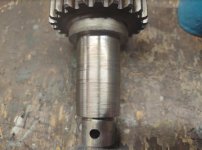

Painted, and I'll be drill oil passages and adding gits oilers to 3 of the 4 bearing holes. Exception is the leadscrew reverse. That slides in and out, besides rotating, so easy enough to lube.

QCGB off:

End cover removed. Replacing seal will be easier with shaft out of the way too. After seeing bushing and shaft for feed rod, I'll be adding a gits oiler for that too.

The problem bushing, is wore, but so is the shaft. I'll be cutting that down, and/or replacing with Mike Thomas's magical parts supply warehouse
 . About .020" wear on the shaft, also taper pin hole is egged out a bit. I'll be going up a size and reaming that out, if I reuse.
. About .020" wear on the shaft, also taper pin hole is egged out a bit. I'll be going up a size and reaming that out, if I reuse. 


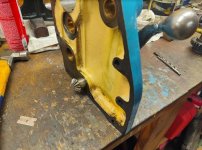


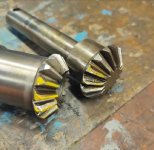

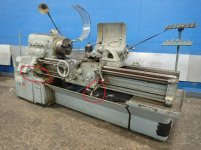
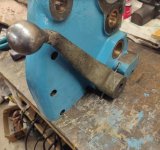

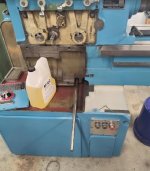
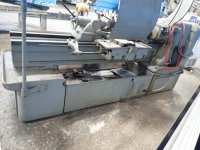



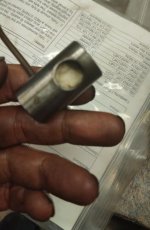

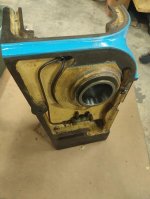



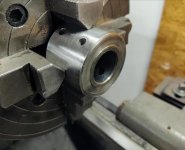

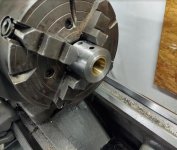

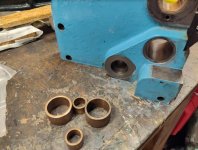

 ! More interesting yet, note the paint on bushing ! My guess is factory paint. But I suppose not impossible someone replaced bearing and painted the interior.
! More interesting yet, note the paint on bushing ! My guess is factory paint. But I suppose not impossible someone replaced bearing and painted the interior.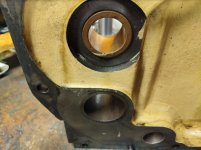
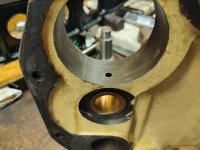



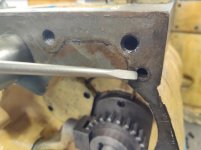
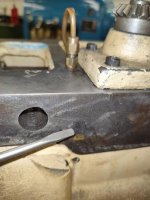
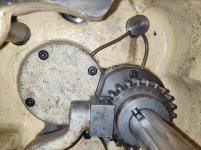
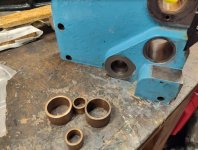




 .
. 
